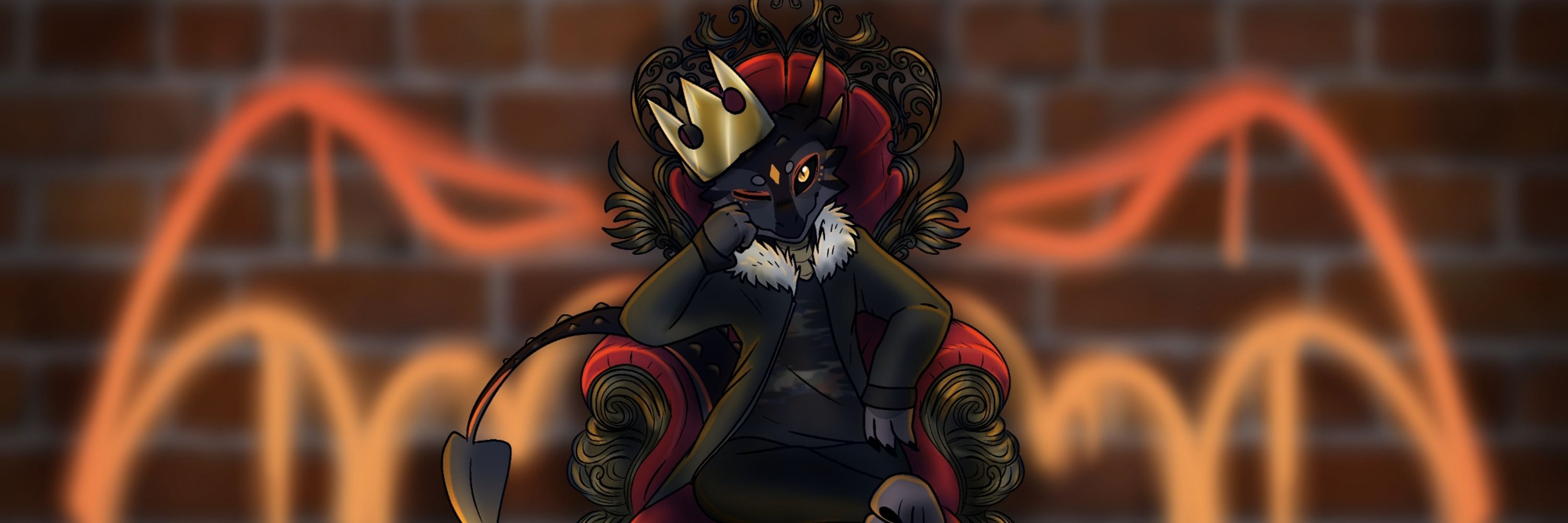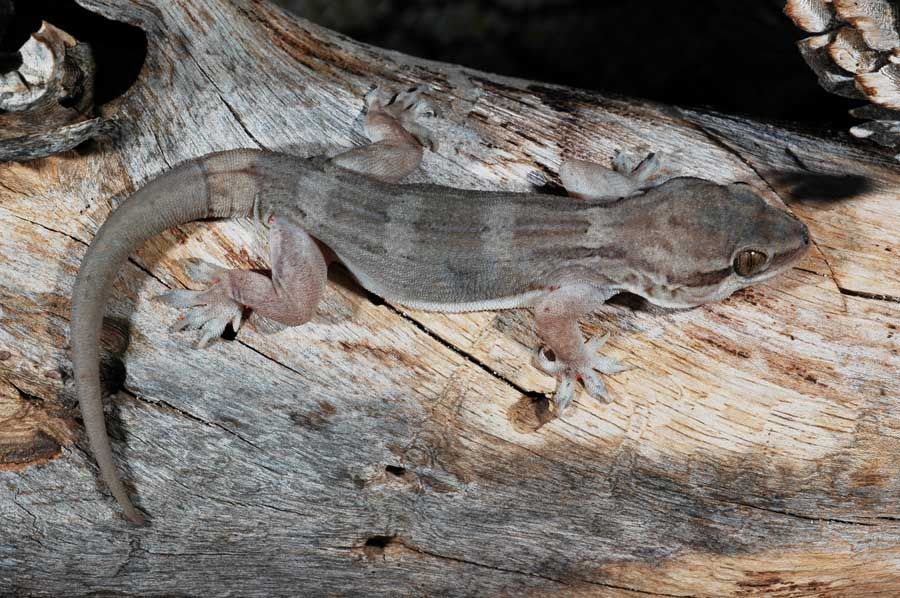


Yo I'm Ivel, a Spanish derg who likes lizards, videogames and worldbuilding. My interests are quite varied and are often a mess but I particularly enjoy videogames and storytelling! I occasionally draw as well.
My Carrd: ivelleviathan.carrd.co
they lowkey look like pickles
They are endemic to Northwestern South America and Panama! They live in burrows they dig themselves under logs! They have slightly red spots on certain parts of their body such as the tail or the neck.

they lowkey look like pickles
They are endemic to Northwestern South America and Panama! They live in burrows they dig themselves under logs! They have slightly red spots on certain parts of their body such as the tail or the neck.
A colorful species from Morocco! Their coloration starts as orange/brown on their head while it progressively becomes green/blue up to the tip of their tails! They're pretty agile and make great climbers. Their tails are pretty fragile.

A colorful species from Morocco! Their coloration starts as orange/brown on their head while it progressively becomes green/blue up to the tip of their tails! They're pretty agile and make great climbers. Their tails are pretty fragile.
A species from the island country of Aruba! Males are blue. They're predominantly herbivorous, but also eat some insects. They exhibit selectivity in their plant consumption due to the presence of toxins in many plant species on the island!

A species from the island country of Aruba! Males are blue. They're predominantly herbivorous, but also eat some insects. They exhibit selectivity in their plant consumption due to the presence of toxins in many plant species on the island!
They're endemic to Table Mountain in South Africa, a pretty dark, cold region compared to the rest of the country due to its lush forests and sea proximity. The black color of these guys' skin helps them absorb heat more efficiently!

They're endemic to Table Mountain in South Africa, a pretty dark, cold region compared to the rest of the country due to its lush forests and sea proximity. The black color of these guys' skin helps them absorb heat more efficiently!
These peculiar desert-dwelling guys owe their name to their long skinny limbs! They have clawed fingers and toes. Although they don't blink, they have a special "eyelid" protruding over their eyes that acts as a sunshade for their eyes!

These peculiar desert-dwelling guys owe their name to their long skinny limbs! They have clawed fingers and toes. Although they don't blink, they have a special "eyelid" protruding over their eyes that acts as a sunshade for their eyes!
These big iguanids (1.5m long) once lived in the islands of Fiji! They coexisted with the still extant Fiji iguanas, but the arrival of humans to the archipelago brought their end 3000 years ago.

These big iguanids (1.5m long) once lived in the islands of Fiji! They coexisted with the still extant Fiji iguanas, but the arrival of humans to the archipelago brought their end 3000 years ago.

These big iguanids (1.5m long) once lived in the islands of Fiji! They coexisted with the still extant Fiji iguanas, but the arrival of humans to the archipelago brought their end 3000 years ago.
An Amazonian species! They mainly feed on ants. They form small colonies with a single male mating other females, who also practice communal nesting. Males have orange heads while females' are yellow. They have short spiky tails!

An Amazonian species! They mainly feed on ants. They form small colonies with a single male mating other females, who also practice communal nesting. Males have orange heads while females' are yellow. They have short spiky tails!
A small Asian species! They have shiny scales, with some forming orange, yellow and blue lines on their sides! They're terrestrial, mostly moving around in leaf litter. They have a great adaptability to most environments!

A small Asian species! They have shiny scales, with some forming orange, yellow and blue lines on their sides! They're terrestrial, mostly moving around in leaf litter. They have a great adaptability to most environments!

A Southeast Asian species! They have a habit of curling up with their tails around themselves when sleeping, similar to cats! They're semi-arboreal, nocturnal and insectivorous.

A Southeast Asian species! They have a habit of curling up with their tails around themselves when sleeping, similar to cats! They're semi-arboreal, nocturnal and insectivorous.
I could not find a common name for these guys lol
They're a semiaquatic species from Venezuela! They have a rough, spiky skin, with dorsal spikes that make them stand out from similar lizards

I could not find a common name for these guys lol
They're a semiaquatic species from Venezuela! They have a rough, spiky skin, with dorsal spikes that make them stand out from similar lizards
An Australian species that are more closely related to geckos than to other legless lizards! They're distinctively thin. They can burrow and slide in and out the sand quickly to avoid danger!

An Australian species that are more closely related to geckos than to other legless lizards! They're distinctively thin. They can burrow and slide in and out the sand quickly to avoid danger!
An Australian species! Although they move quickly, they can't climb well, so they mainly rely on camouflaging for survival! They're pretty similar to other related species, differentiating from them with red on their bodies!

An Australian species! Although they move quickly, they can't climb well, so they mainly rely on camouflaging for survival! They're pretty similar to other related species, differentiating from them with red on their bodies!
These frog-like guys are pretty unique! Their defense mechanism is called autohaemorrhaging, which consists in squirting blood from their eyes! They feed on small insects like ants or termites.

These frog-like guys are pretty unique! Their defense mechanism is called autohaemorrhaging, which consists in squirting blood from their eyes! They feed on small insects like ants or termites.
An Australian species! They're padless geckos, meaning that they lack the suction pads other geckos have in their limbs to adhere to surfaces. They're particularly spiky, a rare sight in leaf-tailed geckos!

An Australian species! They're padless geckos, meaning that they lack the suction pads other geckos have in their limbs to adhere to surfaces. They're particularly spiky, a rare sight in leaf-tailed geckos!
An endangered species from the Seychelles! They show cool tiger-like patterns when camouflaging. Like other chameleons, they hunt prey by sitting and waiting for it to appear and then catch it with their tongue!

An endangered species from the Seychelles! They show cool tiger-like patterns when camouflaging. Like other chameleons, they hunt prey by sitting and waiting for it to appear and then catch it with their tongue!

To enter:
Follow and repost!
1st: Shaded Fullbody
2nd: Flat fullbody
3rd: Flat halfbody
4th: Icon
I do NOT draw humans, full-on robots and closed species!
No raffle accounts.
Ends Nov. 5th!




To enter:
Follow and repost!
1st: Shaded Fullbody
2nd: Flat fullbody
3rd: Flat halfbody
4th: Icon
I do NOT draw humans, full-on robots and closed species!
No raffle accounts.
Ends Nov. 5th!
A Japanese species! They're nocturnal and live in forests, usually near karst areas. They hunt for insects in leaf litter! They're a vulnerable species due to the introduction of cats in their natural habitat.

A Japanese species! They're nocturnal and live in forests, usually near karst areas. They hunt for insects in leaf litter! They're a vulnerable species due to the introduction of cats in their natural habitat.
A Brazilian species! They have a spotted pattern When threatened, they can screech or shed their tail and flee! They mostly feed on spiders and beetles, but their diet varies seasonally, alternating between several types of arthropods.

A Brazilian species! They have a spotted pattern When threatened, they can screech or shed their tail and flee! They mostly feed on spiders and beetles, but their diet varies seasonally, alternating between several types of arthropods.
Also called Madagascar blue iguanas, they show different shades of blue or grey on their skin! This coloration provides good camouflage among the blue-grey rocks of the southwestern side of Madagascar, their natural habitat!

Also called Madagascar blue iguanas, they show different shades of blue or grey on their skin! This coloration provides good camouflage among the blue-grey rocks of the southwestern side of Madagascar, their natural habitat!
A South African species! They have a pretty well armored skin! They mostly feed on caterpillars and other insects, and are ovoviviparous. Their skin tone may vary from grey to black.

A South African species! They have a pretty well armored skin! They mostly feed on caterpillars and other insects, and are ovoviviparous. Their skin tone may vary from grey to black.
A critically endangered species from Socotra, these guys depend on the local dragon's blood tree, a vulnerable plant species, to survive. These trees serve both as a shelter and as a food source for these guys!

A critically endangered species from Socotra, these guys depend on the local dragon's blood tree, a vulnerable plant species, to survive. These trees serve both as a shelter and as a food source for these guys!
boy where is all your flair at get your eyeliner on goddamn

boy where is all your flair at get your eyeliner on goddamn

